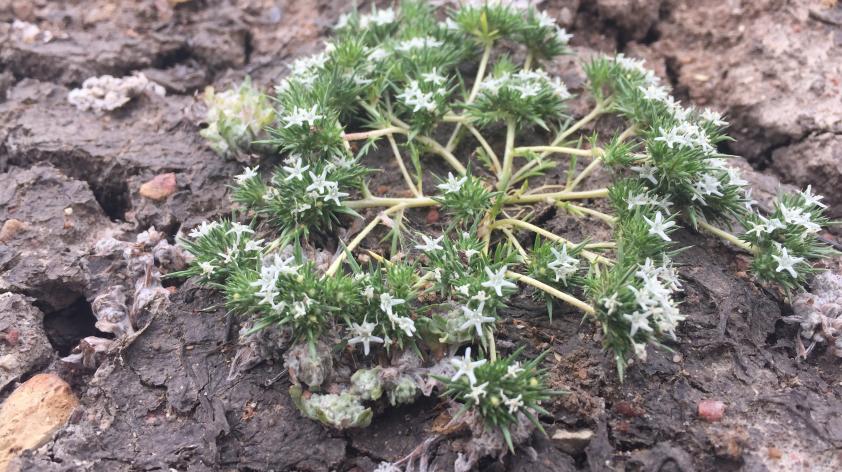
San Diego’s Vernal Pool Specialists
Vernal pools are formed as a result of unique soil properties. A dense layer of soil on or near the surface, known as either a hard pan layer or a clay pan layer, stops the percolation of water into the earth, resulting in pools that drain very slowly. In high rain years, like the one we experienced in the winter of 2016 and spring of 2017, these pools can be wet for 5 to 6 months. While the species specialized to live in vernal pools can be either aquatic or terrestrial in ancestry, they have since evolved to be both. In fact, these vernal pool specialists are now dependent upon annual water level fluctuations. Most vernal pool plants, for example, require their seeds to be submerged in water for a period before they germinate. Others have specialized leaf or root tissues that allow for submerged gas exchanges and underwater photosynthesis. They are also adapted to survive the very dry, hot summers and falls, either dormant underground (geophytes), or as seeds awaiting winter rains.
Navarretia fossalis is known as spreading navarretia, and is a federally listed endangered species. It is found in vernal pools from as far north as Los Angles County, south through San Diego County and slightly into Baja. It’s estimated that 97% of Southern California’s vernal pools have been destroyed by human development, and there are now roughly 45 populations of this species left on the planet. This species is very dependent upon the inundation and drying of vernal pools in order to reproduce. The plant germinates underwater, but does not flower until the pool has completely dried. Seeds have an outer layer that becomes viscous and sticky when moistened. This may help them stick to birds and animals visiting the vernal pool and aid in seed dispersal. The small white flowers attract native mining bees. We made seed collections from two separate populations of Navarretia fossalis this year.
Eryngium aristulatum var. parishii is commonly known as San Diego button celery and is also federally listed as endangered. It is a short-lived perennial that has an underground storage taproot. This vernal pool obligate is distributed from as far north as Camp Pendleton, south throughout coastal San Diego County, with a few historic occurrences in Baja. This plant has specialized air channels in its root tissue (aerenchyma tissue) that allow for gas exchange from leaves growing above water to roots that are submerged (and vice versa). The flowers attract many small insects and are likely pollinated by bee flies and solitary bees. Many vernal pool species have co-evolved with specialist solitary bees, but unfortunately insect pollinators around vernal pools in San Diego have not been well studied. It is very important we protect upland areas around these vernal pools in order to protect these pollinators, some of which may travel significant distances to pollinate these rare plants. We made seed collections from 3 populations of San Diego button celery this summer.
I wrote about a few other vernal pool species last month, and will continue to focus on this habitat next month. Click the link below to view all my blogs! http://institute.sandiegozoo.org/science-blog/by-author/6187













